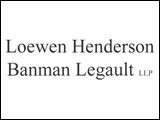The President of Brumm Swine Consultancy says, to accommodate today’s heavier market weight hogs, pork producers need to be looking at increasing the size of their feeders.
“Understanding Feeders and Drinkers for Grow-Finish Pigs” was among the topics discussed last week in Winnipeg as part of the 2016 Manitoba Swine Seminar.
Dr. Mike Brumm, the President of Brumm Swine Consultancy, says since 1977 in the United States 1.3 pounds per year have been added to the carcass weight of market hogs so 15 years from now the pig is going to be 20 to 25 pounds heavier than today so feeders need to be bigger.
Number one, the biggest point on a pig, dimension wise, is the shoulder width. Your code of practice has a table on feeder width, on shoulder width and basically it says, at today’s sale weights, our feeder holes need to be at least 14 inches or 35 centimeters. If they’re less than that, big market weight pigs can’t all get in the feeder holes because they’re just too big.
The second dimension is from the front edge of the feeder to where feed is presented, because as the pig grows bigger its nose gets longer so we have to start increasing that. Harold Gonyou at the Prairie Swine Centre in 1997 determined that 10 inches or 25.5 centimeters from the font lip to feed presentation on a dry feeder was correct for a 97 kilo or 215 pound pig. Remember we’re selling a 127 kilo pig in the U.S. on average today. That means we’ve got to make these feeder spaces bigger. Whether they’re the wet-dry shelf or a dry feeder, we’ve got to make the eating activity of a pig enjoyable, have a quality eating experience.
Dr. Mike Brumm says this is a sure bet, pigs next year will be bigger than this year.



